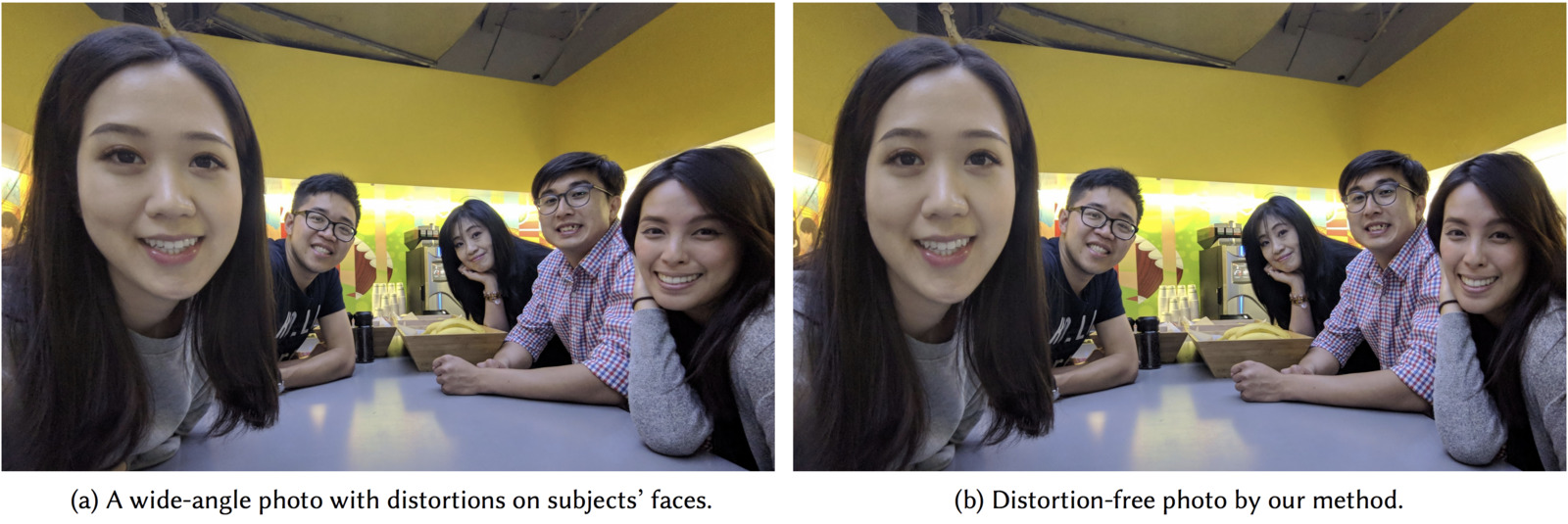

Photographs that tell a story about a person in a specific place at a specific time.Įven old-school traditionalists like Joe McNally are doing it. Either way the guiding idea is "wide (angle) and tight (framing on subject)."
Camera lens distortion big face full#
You are right and there is no point in backing up further with a 35mm lens when shooting a full body portrait as long as the full body fits in the frame.
/what-is-barrel-lens-distortion-493725-3bef21ba098644c285a8ec4bc282d463.png)
This is where distortion is really problematic, and that is why all the examples that you found are tightly framed. I meant the distance for a head and shoulders shot like in your examples, not for a full body shot. In real world use most photographers use greater than 70mm for portraits but anybody can do whatever they want. I probably wouldn't even call that an "environmental portrait" much less a portrait, but again it depends on your definition. The same shot taken from the same place with 35mm would be a small person in the frame and tons of background. A full body shot at 85mm I may call a portrait. Of course one would get a very different framing but this would still be a portrait.ĭepends on ur definition of portrait I guess and what u are trying to do. So as long as one shoots their 35mm lens at the same distance that they would be shooting their 85mm lens, there would not be any problem with distortion. He says he prefers this FL because he feels it places him at the optimal distance in terms of being long enough for a flattering image but still within a comfortable conversational distance with his subject. Peter's current main setup is a Canon 5DS R with a 24-105 f/4 set around 92mm. However, the size of the studio is perhaps the biggest constraint - you simply may not have the space to use longer lengths. Whereas shorter focal lengths (are better for oblong/narrow faces look better less than 85mm. Longer focal lengths are better for "larger"/rounder faces to slim them down - so beyond 100mm. Anything shot less than 70mm seems distorted to me - making the nose very prominent.Īs Peter Hurley says the shape of the face dictates what focal length you should use - "what's in your bag" showed he uses - 100mm (macro) (for skinny models and actors) - other reports show he also uses 85mm, 70-200 and 135mm/2 for headshots and a 24-70 for full body portraits. Nice tests - the shout out response to this is for my eye images shot 135-200mm are more streamlined and in proportion than the rest. I suspect that the general preference for 85-105 mm for portraits has to do with a combination of distance from the subject (subject is more comfortable if the camera isn't right in the face), lower depth of field (to isolate the subject), and minimizing the distortions when going from above to below the subject's eye level.

This is more important at shorter focal lengths. When you then introduce variations in focal length to the above/below/at eye level question, the effects of the differing focal lengths will make the effects of focal length changes quite different. Some portrait photographers have such a strong preference for one of these viewing angles that s/he shoots all portraits at that one perspective, regardless of the shape of the subject's face. Some faces seems to photograph best when the camera is above eye level, others look best shot from below eye level, and others still look best shot at eye level. A good portrait photographer should be looking at how the elevation of the camera relative to the subject's eyes affect the resulting images. There's more to this than just focal length.


 0 kommentar(er)
0 kommentar(er)
